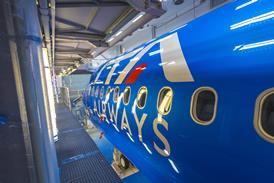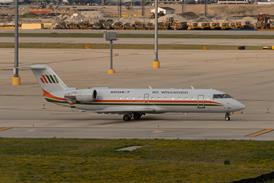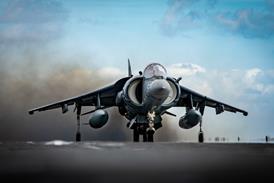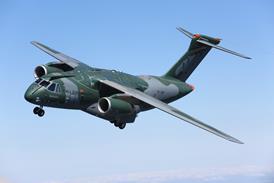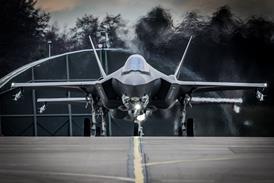Lockheed Martin's F/A-22A Raptor is living up to expectations of performance: "We haven't found an F-15 or F-16 that can find and kill us," say the pilots flying the stealthy superfighter.
Three USAF pilots involved in the current operational test (OPEVAL) programme for the aircraft had the chance to brief Farnborough about their steed in a live video link. The three, Maj Gen Steve Wood, commander of the Air Warfare Center (AWC) at Nellis AFB, and 53rd Wing Raptor pilots Col Ken Murphy and Maj Alex Grynkewich, were not short on their praise.
"We are flying range profiles that put a pair of Raptors up against 6-8 'aggressor' F-16Cs," said Maj Grynkewich. "We are typically ingressing at Mach 1.5 in supercruise and find we can 'kill' all the F-16s in 4-5 minutes."
Gen Wood, describing the Raptor work at Nellis, said: "Our job from an operational test perspective is to ensure the lieutenants can fly it and the sergeants can maintain it."
The Initial Operational Test and Evaluation (IOT&E) is to transition to a Force Development phase in January 2005 at Nellis. The unit at Nellis currently operates eight F/A-22s and is building to include a team of 12 pilots. The unit is clearing tactics and the Operational Flight Programmes (OFPs) with Initial Operating Capability (IOC) with the 1st Fighter Wing at Langley AFB, Virginia, planned for 2005. The 43rd FS Raptor training unit at Tyndall AFB, Florida, received its first jets (Raptor 18) in September 2003. The unit should have received 14 examples by late summer this year.
Overheating
The avionics stability of the Raptor had led to initial overheating issues in the desert heat of Nellis as re-boot issues took time on the ground. However, as Col Murphy explained, software improvements have largely addressed these issues.
"The initial Tape 3.10 software had stability issues, however we now have Tape 3.12 and are moving towards Tape 3.13, and stability and reliability is skyrocketing." However, reports have suggested that software reliability remains poor.
The air-to-ground capabilities of the Raptor are being accelerated in order to help justify funding and establish an early multirole capability. The two internal 1,000lb Joint Direct Attack Munitions (JDAMs) will be supplemented by the addition of the Small Diameter Bomb (SDB) to increase stand-off.
Gen Wood commented on the Raptor's internal cannon: "The gun is a valuable weapon. We have seen it used in Afghanistan and Iraq."
The Raptor's spiral development modernisation process will ensure that the aircraft receives emerging weapons and sensors as they become available. Raptor doesn't carry electro-optic sensors or a targeting pod, instead relying on datalinked information from off-board platforms.
Lockheed Martin built 10 Raptors in the first half of 2004 and is well on the way to producing the 19 contracted for the USAF this year.
JAMIE HUNTER
Source: Flight Daily News


